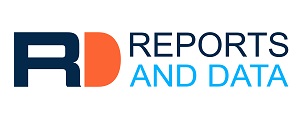Propanol Market Set to Double by 2034, Driven by Demand in Pharmaceuticals and Personal Care

Reports And Data
Propanol Market is on a strong growth path, projected to reach USD 4.0 billion in 2024 and expected to double to USD 8.0 billion by 2034
VANCOUVER, BRITISH COLUMBIA, CANADA, August 18, 2025 /EINPresswire.com/ -- The global Propanol Market is on a strong growth path, projected to reach USD 4.0 billion in 2024 and expected to double to USD 8.0 billion by 2034. This reflects a healthy compound annual growth rate (CAGR) of around 7.2% over the next decade, supported by increasing use of propanol in pharmaceuticals, personal care, and as a sustainable alternative in chemical applications.The pharmaceutical industry is anticipated to remain the largest consumer of propanol, while the personal care sector is projected to grow the fastest, fueled by rising demand for hygiene and wellness products. Key applications driving market expansion include its use as a solvent in pharmaceuticals, coatings, and personal care formulations. The industry is also witnessing a strong shift toward bio-based and eco-friendly propanol solutions, aligning with global sustainability goals.
You Can Download Free Sample PDF Copy Of This Report At: https://www.reportsanddata.com/download-free-sample/002104
Regional Insights
Asia-Pacific is expected to lead both value and volume growth, supported by rapid industrial expansion and favorable government policies that promote chemical manufacturing. The region is projected to register annual production growth of about 8%, while North America and Europe are expected to see moderate growth, driven by technological advancements and stricter sustainability standards.
Market Volume and Pricing Trends
In 2024, global propanol production is forecasted to reach 3.5 million tons, with an increase to 6.5 million tons by 2034, reflecting a CAGR of 6.5%. While demand continues to rise, the market has experienced price fluctuations due to raw material costs, energy prices, and supply-demand imbalances. For instance, feedstock shortages led to a 12% increase in average spot prices in Q1 2025, according to ICIS. Prices in Asia-Pacific remain relatively lower due to competitive manufacturing, while North America and Europe face higher costs tied to regulatory compliance.
Top 10 Companies
BASF SE
Dow Chemical Company
Royal Dutch Shell
LG Chem
Mitsubishi Chemical Corporation
Eastman Chemical Company
Braskem
Oxiteno
SABIC
Sasol
Technology is helping stabilize pricing strategies, with companies increasingly adopting AI-driven pricing models. Early adopters have reported a 4% increase in selling prices and a 1.8% improvement in margins, underlining the potential of digital tools in market operations.
Key Market Drivers
The growth of the Propanol Market is shaped by three major factors. First, the demand for green solvents is rising quickly, with global demand increasing 15% year-on-year in 2024, according to the American Chemical Society. Bio-based propanol is emerging as a key sustainable alternative, further supported by government incentives and consumer preferences.
Second, the steady expansion of the pharmaceutical and personal care industries is boosting demand. The global pharmaceutical sector is expected to grow at a CAGR of 6.3% from 2024 to 2034, according to IFPMA, which will directly increase consumption of propanol as a solvent.
Third, technological advancements in production processes are improving efficiency and reducing environmental impact. Companies adopting AI-driven process optimization and bio-based manufacturing methods are achieving lower costs and higher output. McKinsey reports show that such innovations deliver up to 10% cost savings and a 15% rise in production efficiency. Leading players like BASF SE are also introducing bio-based propanol products, reinforcing the shift toward sustainable solutions.
Market Restraints
Despite the strong outlook, the industry faces challenges. Compliance with strict environmental regulations, particularly in North America and Europe, is driving up production costs. The European Chemical Industry Council reported a 20% increase in compliance costs in 2024, putting pressure on profitability.
Global supply chain vulnerabilities also remain a concern. Factors such as geopolitical tensions and natural disasters can cause raw material shortages, as seen during the COVID-19 pandemic, which cut global propanol production by 15% in 2020.
Additionally, competition from alternative solvents like ethanol and butanol is intensifying. These substitutes are often cheaper and already well-established in the market. A 2024 study by the American Chemical Society reported that alternative solvents captured 10% more market share due to cost advantages.
Request customization on the report @ https://www.reportsanddata.com/request-customization-form/002104
Industry Outlook
Overall, the Propanol Market is set for robust expansion, supported by sustainability trends, industrial demand, and technological innovation. Leading players including BASF SE, Dow Chemical Company, and Royal Dutch Shell are focusing on new product launches, partnerships, and advanced manufacturing methods to stay competitive.
Propanol Market Segmentation
By Product Type
N-Propanol
Isopropanol
By Application
Solvents
Chemical Intermediates
Pharmaceuticals
Personal Care Products
Coatings
By End User
Pharmaceuticals
Personal Care and Cosmetics
Chemicals
Paints and Coatings
Others
By Technology
Bio-based Production
Conventional Production
By Distribution Channel
Direct Sales
Distributors
With strong growth opportunities in pharmaceuticals, personal care, and bio-based alternatives, propanol is expected to play a central role in shaping the future of eco-friendly solvents and sustainable chemical production worldwide.
John W
Reports and Data
+1 2127101370
email us here
Legal Disclaimer:
EIN Presswire provides this news content "as is" without warranty of any kind. We do not accept any responsibility or liability for the accuracy, content, images, videos, licenses, completeness, legality, or reliability of the information contained in this article. If you have any complaints or copyright issues related to this article, kindly contact the author above.
